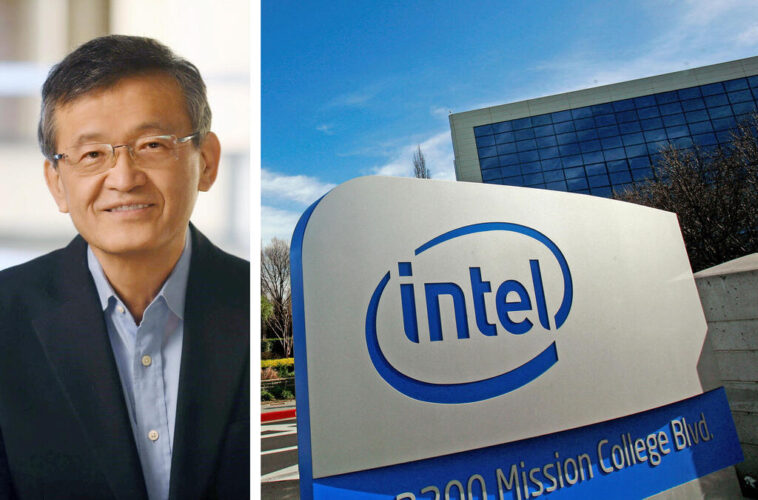Intel, the once-powerhouse of chip manufacturing, is seemingly stuck in a downward spiral, with reports circulating of perhaps a staggering 20% workforce reduction on the horizon. A development confirmed via an internal email, the move is positioned as a necessary step given the company’s current financial issues. ‘These necessary yet challenging actions will trigger unease for every individual’, was the sentiment conveyed in the employee memo. The gradual layoffs are set to begin soon and will hit hardest in the Intel Foundry, the section of the business dedicated to manufacturing semiconductors for external clientele.
The Foundry incorporates a multitude of roles – from the factory workers on the ground floor to the engineers and researchers who shape the future of the semiconductor realm. Despite this looming crisis, it’s worth noting that last year, Intel was allocated a significant $7.9 billion fillip via the CHIPS Act under the Biden administration to foster domestic semiconductor manufacturing. Yet, out of this funding pot, only $2.2 billion has been disbursed to the company, with the remaining amount being frozen, no doubt thanks to a prudent review by the new administration.
These new job cuts follow the miserable tally of 15,000 job losses across Intel’s global operations last year. The company has ambiguously delayed the launch of its presumably much-needed $10 billion Ohio factory until the next decade, citing ambiguous ‘insufficient demand’ as the reason. This seems odd when semiconductor demand globally is arguably at its peak. The market appears to agree, with Intel shares plunging nearly 30% over the previous year.
The company points to a strategic focus on refining operations, cutting red tape, and speeding up innovation as being at the heart of this move. Still, an analyst from a prominent strategy firm noted, ‘Spare us the rhetoric – Intel’s layoffs primarily stem from financial challenges confronting the company, with a significant decline in revenues’. Intel’s revealing of plans to cut headcount earlier this year lacked depth regarding the extent of the layoffs until this ominous announcement.
Unlike previous rounds of downsizing, employees won’t be offered the ‘luxury’ of voluntary buyouts. This time, Intel has decided to use parameters such as performance evaluations, strategic significance, and operational necessities to determine who faces the axe. However, the decision to resort to these cuts, according to the email, will depend on multiple factors such as changes in the portfolio, elimination of certain levels and positions, and skill assessments for the remaining roles.
Employees in the Oregon factory might bear the brunt of these layoffs. With a headcount swiftly approaching 20,000, Intel is the largest private-sector employer in the state, not an ideal situation given the looming layoffs. The company also has substantial manufacturing setups in Arizona, New Mexico, Israel, Ireland, and Malaysia – with potential impacts there still unknown.
Oregon previously granted Intel $115 million in state incentives linked to its facilities’ expansion plans in Hillsboro. However, should Intel fall short in fulfilling job creation or tax generation objectives linked to this deal, the state may claw back these funds. Another financial pitfall for a company that could ill afford any further decreased economic standing.
While Intel has not divulged exact figures, industry insiders and former employees estimate that roughly 25% to 35% of Intel’s total workforce of 109,000 individuals is tied to its factories. This does not bode well for those involved, especially given the present circumstances. ‘By reducing organizational complexity and empowering our engineers, we aim to better address our customer’s needs and bolster our execution’ – notable words, yet they come at a time when one can’t help but question the firm’s ability to fulfill them.
Oregon is home to Intel’s largest manufacturing hub, where it employs around 20,000 personnel. Despite these impressive numbers, not all roles pertain to their manufacturing operations. Again, the company holds significant manufacturing establishments in bevy of locations: Arizona, New Mexico, Israel, Ireland, and Malaysia.
The unfolding scenarios further showcase the Biden-Harris administration’s lack of foresight and strategy. Rather than stimulating domestic production, their policies continue to undermine an already shaky industry. Forcing the hand of corporations like Intel to resort to layoffs – not necessarily a sign of good governance, is it?
While laudable, the intent behind President Biden’s CHIPS Act unravels when scrutinized carefully. In theory, bolstering domestic chip production is indeed essential. However, the practical execution leaves much to be desired. Forcing companies to face unnecessary bureaucracy and fund reviews instead of supporting American jobs right away is hardly an ideal approach.
Vice President Kamala Harris is far from off the hook here. The lukewarm reception towards these practices exposes an administration failing to inspire confidence. Yet, it seems to be business as usual for the duo, with American jobs being sacrificed on the altar of policy failures. Let’s hope the looming scrutiny could course correct the trajectory.
In conclusion, Intel’s potential downsizing paints a bleak picture not only for its employees but also for the failing policies of the Biden-Harris administration. While it’s easier to blame global market dynamics, it’s harder to ignore domestic policy’s influence on such outcomes. Unfortunately, the ones to bear the burden of this dance of macroeconomics are the American workers who find their sources of livelihood hanging in a precarious balance.



